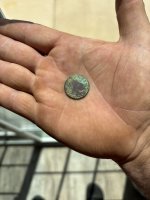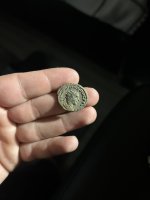FiresEye
Sr. Member
- Aug 17, 2010
- 322
- 5
So, I have some chunks of bedrock from my favorite gold producing river... This place hasbeen and is currently being dredged, panned, and sluiced. However, I see few people collecting ore. There's several reasons.. It's heavy, somewhat hard to get to, and the lack of knowledge.
However, I have overcome these and have a nice bit of heavily mineralized quartz, with mice, garnet, ironites, and even some of the pieces show some some cinnabar.
So let's say that your payload of crushed rocks is contaminated with mercury and you plan to use conventional methods to recover it ( screening, sluicing, then blue bowling) and there is mercury( either natural or runoff).... What happens to the find gold? SUrely it would grab up with the mercury and then just float right off.. right?
How can one stop or even perhaps eliminate mercury contamination from the crushed ore, and is this even a factor.
If heating large batches of ore to evaporate the mercury is the only option.. Forget it
So, is there much to worry about here?
Let's say a ton( or even a little bit) of flour mercury gets in the crushed ore.. won't all the gold float off or be discarded( in blue bowl, whatever, etc) ?
_Fire
However, I have overcome these and have a nice bit of heavily mineralized quartz, with mice, garnet, ironites, and even some of the pieces show some some cinnabar.
So let's say that your payload of crushed rocks is contaminated with mercury and you plan to use conventional methods to recover it ( screening, sluicing, then blue bowling) and there is mercury( either natural or runoff).... What happens to the find gold? SUrely it would grab up with the mercury and then just float right off.. right?
How can one stop or even perhaps eliminate mercury contamination from the crushed ore, and is this even a factor.
If heating large batches of ore to evaporate the mercury is the only option.. Forget it

So, is there much to worry about here?
Let's say a ton( or even a little bit) of flour mercury gets in the crushed ore.. won't all the gold float off or be discarded( in blue bowl, whatever, etc) ?
_Fire



 - especially when you start to hit a good crack ! usually in the slick layer .......
- especially when you start to hit a good crack ! usually in the slick layer ....... 









